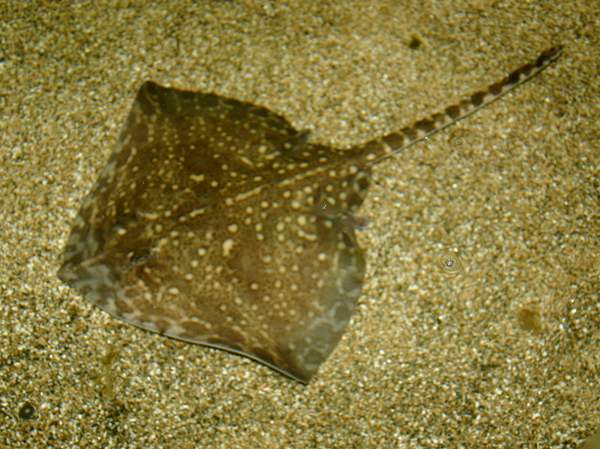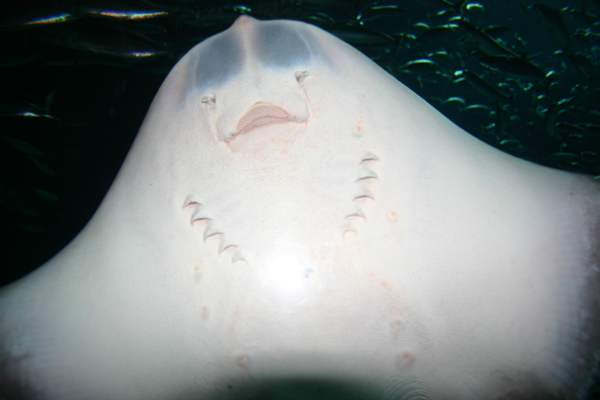Raja clavata - Thornback Ray
Phylum: Chordata - Class: Elasmobranchii - Order: Rajiformes - Family: Rajidae

This is the commonest of the rays found around the coast of Britain, and much of the so-called 'skate' sold in fish shops is in fact thornback. In 1981 a 31lb 7oz (nearly 15kg) Thornback Ray was caught by Mr J Wright fishing from a boat off the North Wales coast, and this specimen holds the British rod-caught record.
The upper body is covered in prickles and, once the fish is mature, a number of large spines - hence its common name.

Found usually over sand and mud in water of 10 to 60m depth, Thornback Rays will move into the shallows in spring when they are ready to spawn. They lay their eggs between March and August, and it takes about five months for the eggs to hatch.

Young Thornback Rays feed on crustaceans and other bottom-dwelling creatures, switching more to eating crabs and small fishes as they develop. They reach maturity in about eight years.
To avoid taking in silt when resting on the bottom, Thornbacks draw water into their gill chamber through a hole just behind the eye - this aperture is called a spiracle.
Excited at the prospect of flyfishing? So are we, and we're pretty sure you would find the Winding River Mystery trilogy of action-packed thrillers gripping reading too. Dead Drift, Dead Cert, and Dead End are Pat O'Reilly's latest river-and-flyfishing based novels, and now they are available in ebook format. Full details on our website here...
Buy each book for just £4.96 on Amazon...
Please Help Us: If you have found this information interesting and useful, please consider helping to keep First Nature online by making a small donation towards the web hosting and internet costs.
Any donations over and above the essential running costs will help support the conservation work of Plantlife, the Rivers Trust and charitable botanic gardens - as do author royalties and publisher proceeds from books by Pat and Sue.
